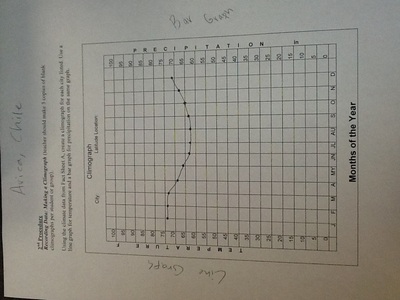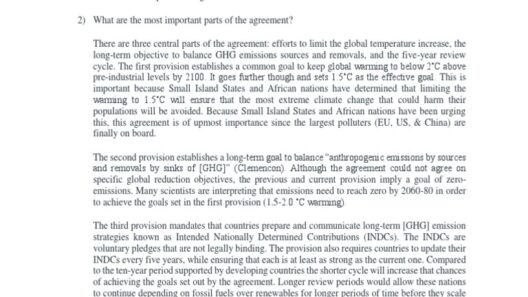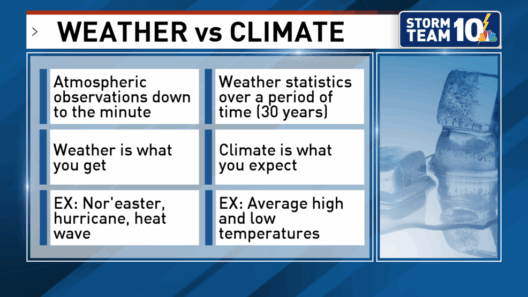When we gaze out at the ocean, we may see inviting waves and serene expanses of water, but beneath the surface lies a complex network of currents that plays a monumental role in shaping our planet’s climate and temperature. How often do we consider the invisible forces that govern our environments? Could understanding these currents hold the key to confronting climate challenges? Let’s delve into this fascinating interplay and unravel the complexities surrounding oceanic currents and their substantial impact on our climatic systems.
Curiously, how do these unseen currents influence everything from weather patterns to the viability of terrestrial ecosystems? An exploration of the interactions between water movements and climatic variables reveals the intricate dance that dictates weather and temperature around the globe.
The Essence of Ocean Currents
Ocean currents are large-scale flows of seawater that move through the world’s oceans, driven by factors such as wind, salinity, and the Earth’s rotation. These currents can be categorized into two main types: surface currents, which are influenced largely by wind, and deep-water currents, also known as thermohaline circulation. Together, these systems form a global conveyor belt that circulates heat and nutrients throughout the oceans.
Surface currents, such as the Gulf Stream, transport warm water from the tropics towards the poles, significantly affecting the climates of coastal regions. For instance, regions like Western Europe enjoy milder winters due to the warm currents flowing from the tropics, while areas further east, such as Scandinavia, experience harsher winter conditions largely due to the displacement of cold air masses.
Deep-water currents, on the other hand, are propelled by variations in water density, which are influenced by temperature and salinity gradients. This process is vital for maintaining the health of marine ecosystems, as it governs the distribution of nutrients and supports rich biodiversity in oceanic habitats.
Understanding Climate Patterns
The impact of ocean currents on climate is profound and multifaceted. By redistributing heat across the globe, these currents serve as a moderating force, balancing temperatures between equatorial and polar regions. This temperature regulation directly influences atmospheric conditions, leading to the formation of various weather patterns and climatic zones.
Consider the El Niño and La Niña phenomena, which illustrate the significant role of ocean currents in global weather dynamics. El Niño, characterized by the warming of ocean surface waters in the central and eastern Pacific, can lead to weather disruptions, such as increased rainfall in some regions and drought in others. Conversely, La Niña involves the cooling of these waters and can trigger opposite weather patterns. These oscillations profoundly demonstrate how shifts in ocean currents can have cascading effects on atmospheric conditions globally.
The Dance of Temperature and Weather Events
Temperature fluctuations driven by ocean currents contribute to the chronicle of climatic events. With the currents acting as conduits of heat, changes in their behavior can enhance or mitigate extreme weather phenomena, such as hurricanes, monsoons, and even droughts. Warm ocean waters can fuel hurricanes, intensifying their destructive capacity and altering storm tracks. Meanwhile, colder currents may suppress hurricane activity and mitigate their impacts.
Moreover, as climate change alters the ecosystem of our oceans, the stability of ocean current patterns may also be at risk. With rising global temperatures leading to melting ice caps and altered salinity levels, the established flow of currents may shift, potentially resulting in unpredictable weather patterns and exacerbated climatic extremes—not merely a future concern, but a pressing reality.
The Link Between Currents and Biodiversity
Not only do ocean currents affect climate and temperature, but they also bear significant implications for marine biodiversity. Life forms in the ocean are intricately interconnected with these currents, relying on them for migration, breeding, and nutrient acquisition. The upwelling zones, where nutrient-rich waters surface due to the movement of currents, foster some of the most productive marine ecosystems on the planet.
Yet, as climate continues to change, many species that are sensitive to water temperatures may find their habitats disrupted. Altered currents can push nutrient-rich waters away from vital habitats, creating imbalance and threatening the survival of marine species. Rethinking conservation strategies may be imperative as we adapt to these dynamic changes imposed by shifting oceanic currents.
A Call to Understanding and Action
In conclusion, ocean currents represent a fundamental aspect of our planet’s climatic framework. Their influence extends far beyond the horizon, impacting weather patterns, temperature distribution, and biodiversity across continents. As stewards of the Earth, our understanding of these vital currents is crucial in addressing climate change and its multitude of effects. How can we harness this knowledge to mitigate environmental challenges? Engaging in deeper dialogue and promoting awareness about ocean currents may be the first step in cultivating a future that embraces both environmental sustainability and resilience.
Ultimately, as we move forward, recognizing the importance of oceanic currents in shaping our climate will be essential in understanding both current impacts and future challenges. With the climate crisis looming, addressing these complexities is not optional; it’s imperative.







